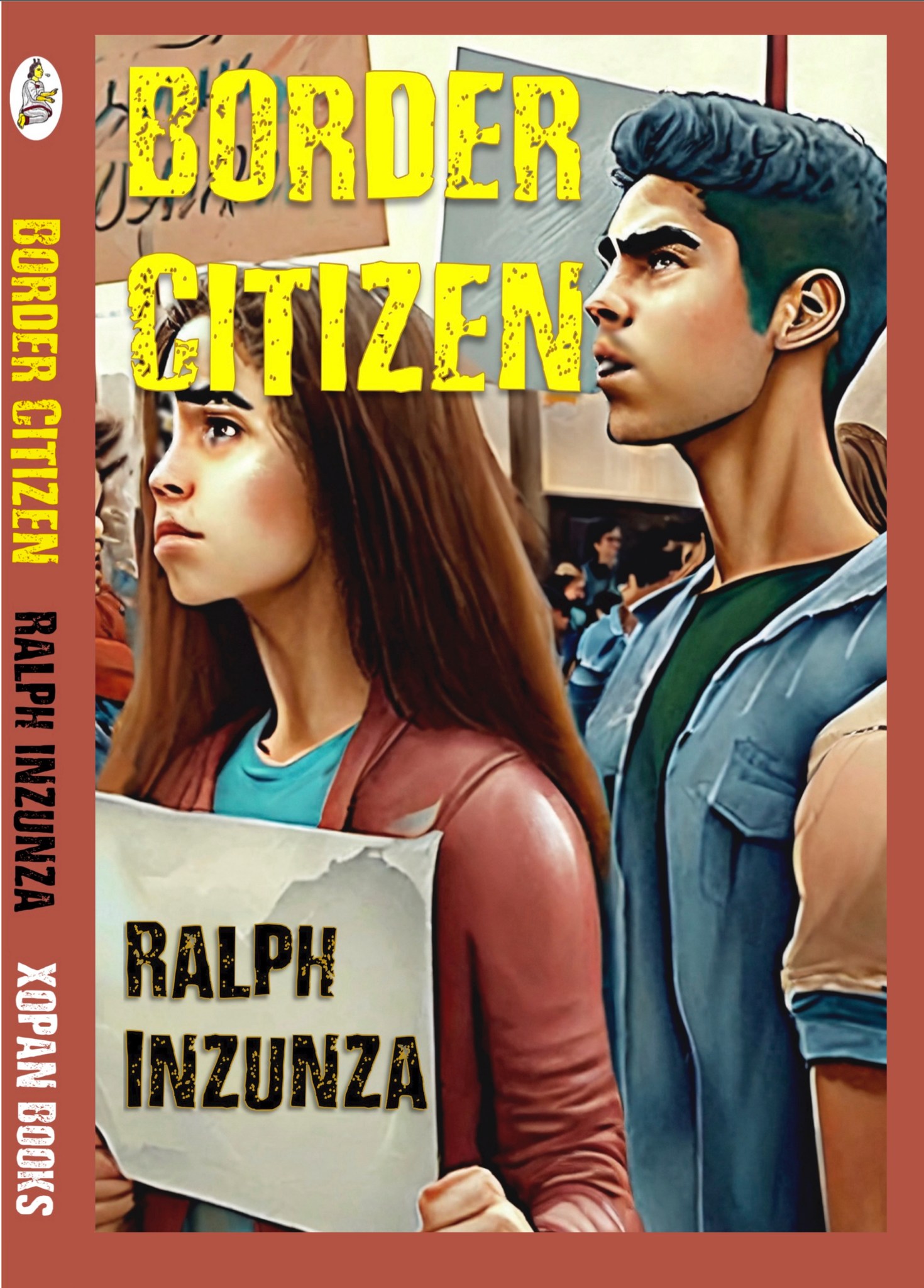An amazing night in NYC at the San Diego State University Press book launch event at the 92nd Street Y heralding the...
Posted by William Nericcio on Wednesday, September 18, 2024
An amazing night in NYC at the San Diego State University Press book launch event at the 92nd Street Y heralding the...
Posted by William Nericcio on Wednesday, September 18, 2024
I have seen the future of art and it is the De La Torre Bros!
Ralph Inzunza is the author of The Camp and Border Citizen. Armed with political experience as a Democratic political consultant, his books focus on struggles against the political system. "Border Citizen" is published and available for sale on Amazon or directly through Xopan Books our new young adult imprint. This interview was conducted in February of 2024 by Toki Lee, senior editor and marketing associate of SDSU Press. This is a lightly edited version of the interview; a full, unabridged version can be found on YouTube.
* * *
SDSU Press: Please introduce yourself and your new book in as many or few words as you'd like.
 Inzunza: Yes and no. I think the one thing I told Dr. Nericcio—and I might have told Nayeli, my editor—is that I don't think I'm a good writer. I'm a good storyteller. I'm a politician—a recovering politician. When you're a politician, you're telling stories all the time—most of them truthful—but you are telling stories, and you're out there, on the stump, giving speeches, trying to get elected, trying to get votes, sway people… So, I basically took some of the storytelling ideas I have, and I just started writing. I think I got mainly C's, maybe a couple of B's, in high school and college English and Literature. So, I'm not a writer. My wife, on the other hand, she's an educator—she's very good at grammar and she can write. I'd like to see her write a book, to be quite honest. I think she'd write a much better book than me.
Inzunza: Yes and no. I think the one thing I told Dr. Nericcio—and I might have told Nayeli, my editor—is that I don't think I'm a good writer. I'm a good storyteller. I'm a politician—a recovering politician. When you're a politician, you're telling stories all the time—most of them truthful—but you are telling stories, and you're out there, on the stump, giving speeches, trying to get elected, trying to get votes, sway people… So, I basically took some of the storytelling ideas I have, and I just started writing. I think I got mainly C's, maybe a couple of B's, in high school and college English and Literature. So, I'm not a writer. My wife, on the other hand, she's an educator—she's very good at grammar and she can write. I'd like to see her write a book, to be quite honest. I think she'd write a much better book than me.  |
| Inzunza at a book signing. |
SDSU Press: Beautifully said. It's grounded in a lot of historical context and political context too, and I'm really happy that none of that was simplified or dumbed down just because it's a YA novel. Other than that, is there anything else you wanted to say or touch upon? Any closing remarks you have?
Inzunza: I feel that I'm really excited about the outreach I've gotten from school boards and teachers. We've sold quite a few books, and we're gonna sell a heck of a lot more. I'm supposed to have about 2 or 3 thousand sold by the end of this year, which is pretty good for a YA book. They say if you can sell a thousand, you can get people's attention and they like it.
The only thing I would say is that I have a third book in the works, which is a sequel to this book. It's Carlos Reyes, and Carlos Reyes is now four years older, and he's entering his first year in college. So, it's about the trials and tribulations that a young kid goes through when entering college, and he's still political, so he's going to get some people to run for office and get involved, and do a whole bunch of different things. I hope to have that book completed and maybe out in a couple years—two or three years,we'll see.
I still have a life trying to pay the rent and pay the mortgage. I run political campaigns for a living, so this is a very busy time of the year for me—the primaries coming up in a couple of weeks, you have the general November… In between running these campaigns, I try to be disciplined and write a couple pages a day and all that. The next book—which I'm calling The Society—which I'll explain in the book, is about Carlos Reyes's first year in college and some of the politics and discrimination issues that go on being a young Latino student, or a person of color in a major university campus.
SDSU Press: Do you think that will also be a YA novel, or do you think it'll grow with your audience and evolve into an adult novel?
Inzunza: I think this one will still be a young adult novel, but on the older aside. I was asked the other day by a teacher what the 2-3 year target age is for Border Citizen, and I said 8th, 9th, and 10th grade. If you forced me to pick one year, I would say 9th graders. I think it's perfect for 9th graders. The next book, I would say 11th, 12th, and first year of college. But, I'm writing it for seniors in high school. The ideal thing would be there are some 9th graders that start school this Fall, and they read it, and by the time they start their senior year, they'll have my next book to read. Here I am wishing for things—you can't control everything—but if I had my druthers, that would be it. There would be a bunch of Fall freshman in high school that will read Border Citizen, and three years later, they'll read The Society. That would be really ideal.
SDSU Press: We'll be looking out for it, certainly. I hope that SDSU Press will be the ones to be involved in it,
Inzunza: Me too! Tell Dr. Nericcio! You tell Dr. Nericcio!
SDSU Press: I will, me personally! Thank you so much for being with me, it's been a pleasure talking to you. Anything else you want to say?
Inzunza: I love what you're doing, I think it's so good that you have this blog and put things on YouTube, and you get people talking a little about literature. In this day and age there's so much social media, it's so easy to get caught up on Instagram, TikTok, and Snapchat, but every now and again, it's okay to open up a good book and enlighten yourself on a subject you may not know all that about. I think what you're doing is healthy and I really thank you for it.
* * *
Check out Ralph Inzunza's community outreach work below. Here are some pictures from his recent reading in San Francisco
Hello, and welcome again, loyal readers. This is Robert Lang, full-time MFA student, SDSU Press editorial assistant, and part-time archeologist. I'm proud to welcome you back to yet another edition of 'FROM THE DEPTHS OF SDSU PRESS'. This week we'll be journeying through ancient Mayan ruins with an artist and anthropologist, but FIRST a bit of modern archaeological anthropology.
Perched above the desk of hardworking Press staffers is what I've come to lovingly refer to as the 'Winnebago of Wonders'.
WRITER'S NOTE: This post was meant to be finished in the year 2023, but in the fast moving world of academia, a 2023 deadline means January of the following year. So without further ado, onto the review!
___________________
Hello loyal readers (and future loyal readers) of the Aztec Paper! My name is Robert Lang, an MFA Creative Writer at SDSU and proud staffer for SDSU Press!
Some of you may not be aware of the absolute state of the SDSU Press offices.
I have to note that there is a second ominous stack of the book that's tucked away behind a mountain of cardboard boxes. The sight would be too horrifying to your virgin eyes, dear reader. Be grateful I found the marginally less ominous stack next to a single copy of Cultural Studies in the Digital Age